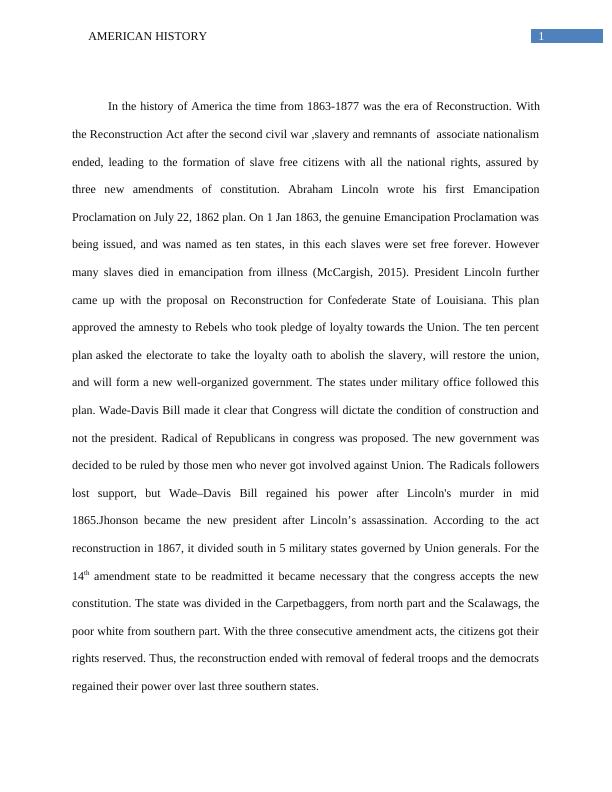American History: Reconstruction and Changes in Society
Reconstruction of the Second Civil War, focusing on Lincoln's plan, the Wade-Davis Bill, and Andrew Johnson's approach to Reconstruction.
4 Pages766 Words123 Views
Added on 2023-06-09
About This Document
This article discusses the era of Reconstruction in American history, including the Emancipation Proclamation, the ten percent plan, and the Wade-Davis Bill. It also covers the changes in society due to industrialization, urbanization, and immigration, including the Haymarket Square incident and the Omaha Platform. The impact of the new deals on society is also explored.
American History: Reconstruction and Changes in Society
Reconstruction of the Second Civil War, focusing on Lincoln's plan, the Wade-Davis Bill, and Andrew Johnson's approach to Reconstruction.
Added on 2023-06-09
ShareRelated Documents
End of preview
Want to access all the pages? Upload your documents or become a member.
American History: Lincoln's Approach vs Radical Republicans
|5
|1075
|296
Abraham Lincoln and the Emancipation Proclamation
|3
|568
|158
Smalls 6 African Americans In the Military
|6
|1311
|107
Leadership Lessons from Abraham Lincoln
|4
|648
|11
Abraham Lincoln and the Emancipation Proclamation
|4
|504
|464
The Populist and Progressive Reformers
|5
|1329
|191


